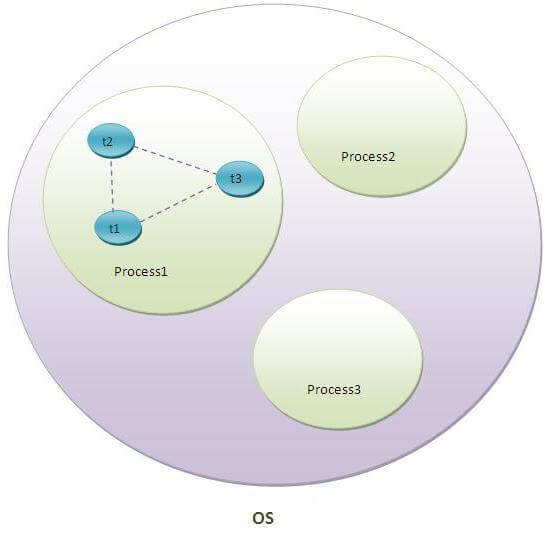Multithreading in Java
- Multithreading in java is a process of executing multiple threads simultaneously.
- Thread is basically a lightweight sub-process, a smallest unit of processing. Multiprocessing and multithreading, both are used to achieve multitasking.
- But we use multithreading than multiprocessing because threads share a common memory area. They don't allocate separate memory area so saves memory, and context-switching between the threads takes less time than process.
- Java Multithreading is mostly used in games, animation etc.
Advantage of Java Multithreading
1) It doesn't block the user because threads are independent and you can perform multiple operations at same time.
2) You can perform many operations together so it saves time.
3) Threads are independent so it doesn't affect other threads if exception occur in a single thread.
Multitasking
Multitasking is a process of executing multiple tasks simultaneously. We use multitasking to utilize the CPU. Multitasking can be achieved by two ways:
- Process-based Multitasking(Multiprocessing)
- Thread-based Multitasking(Multithreading)
1) Process-based Multitasking (Multiprocessing)
- Each process have its own address in memory i.e. each process allocates separate memory area.
- Process is heavyweight.
- Cost of communication between the process is high.
- Switching from one process to another require some time for saving and loading registers, memory maps, updating lists etc.
2) Thread-based Multitasking (Multithreading)
- Threads share the same address space.
- Thread is lightweight.
- Cost of communication between the thread is low.
Note: At least one process is required for each thread.
What is Thread in java
- A thread is a lightweight sub process, a smallest unit of processing. It is a separate path of execution.
- Threads are independent, if there occurs exception in one thread, it doesn't affect other threads. It shares a common memory area.

- As shown in the above figure, thread is executed inside the process. There is context-switching between the threads. There can be multiple processes inside the OS and one process can have multiple threads.
No comments:
Post a Comment